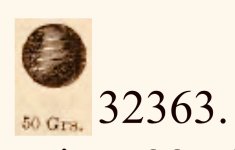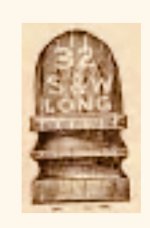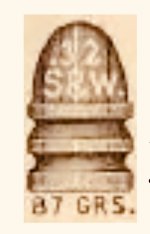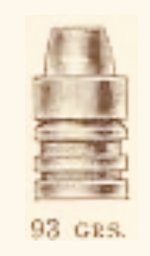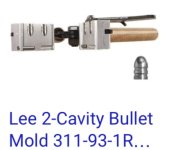Slug the bore
The easiest way to tell is to "slug" the bore and measure the findings.
The 32-44 : The bore should slug to .323
The 32 Smith & Wesson both long and early standard: .312
The H&R 32 Long "early cartridge": .308
I've proven this by slugging all calibers listed and documenting barrel lengths, serial numbers, and slugs are bagged and tagged. I have the slugs if anyone want to see photo's. The 32 H&R slugs undersized because it was designed for an undersized hollow based bullet.
There was a following for an early hollow base bullet for some years during the early Black Powder cartridge Era. It's very difficult to follow but it did exist for a while. The theory is sound using black powder but very dangerous with smokeless because of the early undersized bores. I've traced the change that took place in the early 1890's in my opinion was an attempt to standardize the caliber. Eventually all manufacturers went to the .32 Smith and Wesson but not until "after" many thousands of guns were manufactured with undersized bores...Pretty dangerous from a smokeless perspective.
If the OP's bore slugs to .312 than it was originally a 32 Smith & Wesson Long or short. Both are the same diameter. It has to slug to .308 in order to be designed for the early H&R 32 Hollow based round.
Ideal actually made a hollow based 32 Long round in their 1891 tool. Listed as a 32L.I.L.( 32 Long Inside Lubricated) I have one if someone wants to see it. I can post a photo. That's one of the rarest Ideal tools made. Not unlike the Op's 32 H&R number 1 tool.
Murph
The easiest way to tell is to "slug" the bore and measure the findings.
The 32-44 : The bore should slug to .323
The 32 Smith & Wesson both long and early standard: .312
The H&R 32 Long "early cartridge": .308
I've proven this by slugging all calibers listed and documenting barrel lengths, serial numbers, and slugs are bagged and tagged. I have the slugs if anyone want to see photo's. The 32 H&R slugs undersized because it was designed for an undersized hollow based bullet.
There was a following for an early hollow base bullet for some years during the early Black Powder cartridge Era. It's very difficult to follow but it did exist for a while. The theory is sound using black powder but very dangerous with smokeless because of the early undersized bores. I've traced the change that took place in the early 1890's in my opinion was an attempt to standardize the caliber. Eventually all manufacturers went to the .32 Smith and Wesson but not until "after" many thousands of guns were manufactured with undersized bores...Pretty dangerous from a smokeless perspective.
If the OP's bore slugs to .312 than it was originally a 32 Smith & Wesson Long or short. Both are the same diameter. It has to slug to .308 in order to be designed for the early H&R 32 Hollow based round.
Ideal actually made a hollow based 32 Long round in their 1891 tool. Listed as a 32L.I.L.( 32 Long Inside Lubricated) I have one if someone wants to see it. I can post a photo. That's one of the rarest Ideal tools made. Not unlike the Op's 32 H&R number 1 tool.
Murph
Last edited:


